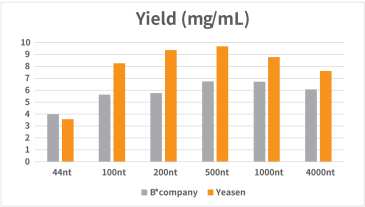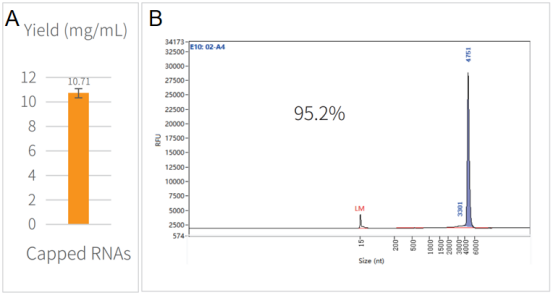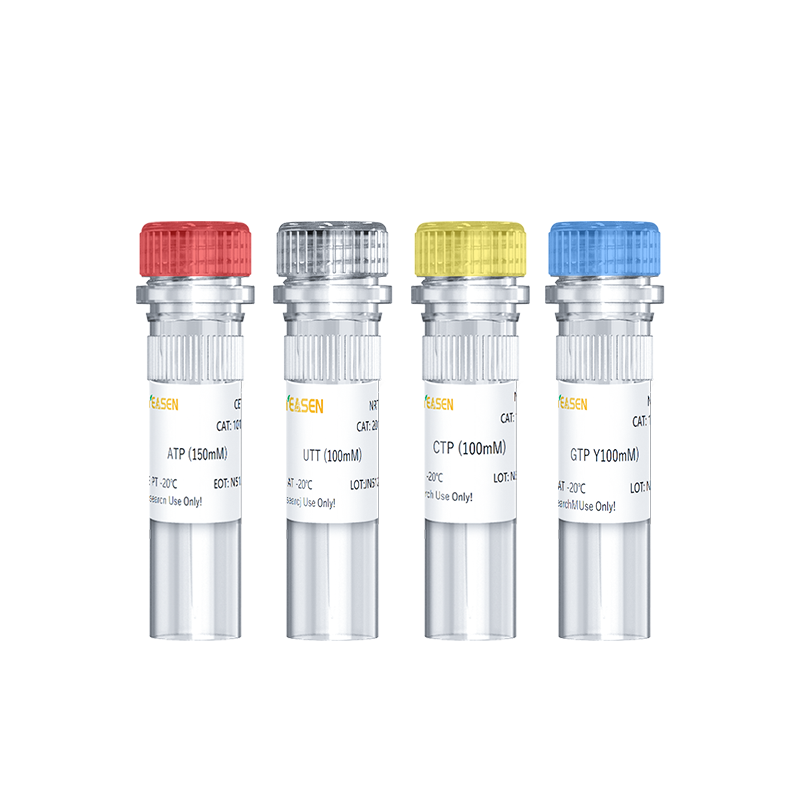NTP Set Sodium Solution (ATP, CTP, UTP, GTP, 100 mM each)
Description
The NTP Set Solution is a convenient set of 100 mM aqueous solutions of each of ATP, CTP, UTP, GTP, supplied in separate vials. They can be used in a variety of molecular biology applications, such as in vitro transcription, RNA amplification, siRNA synthesis, etc, additionally, used as a reaction substrate or coenzyme for a variety of enzymes.
This product is a clear colorless solution prepared from trisodium salts of ATP, UTP, GTP and CTP with a purity of ≥99%, pH = 7.0±0.1 (25°C), concentration of 100 mM, and is DNase-free and RNase-free.
Feature
- Validated, product-specific process and analytical methods
- Product-specific stability
- Documentation follows applicable GMP guidelines
- AOF production process and raw materials (TSE & BSE)
- Nitrosamine statement
- Regulatory support documents available
- Large-scale production
- Nucleotide in the multiple salt form(Na+, Tris etc) always available to meet different downstream application needs
Application
- RNA synthesis and amplification
- Building block for in vitro transcription
Component
| Components No. | Name | 10133ES03 |
| 10133-A | ATP Solution (100 mM) | 1 mL |
| 10133-B | UTP Solution (100 mM) | 1 mL |
| 10133-C | CTP Solution (100 mM) | 1 mL |
| 10133-D | GTP Solution (100 mM) | 1 mL |
Shipping and Storage
The product is shipped with dry ice and can be stored at -15℃ ~ -25℃ for two years.
Figures
- Standard RNA Synthesis

Figure 1. Standard RNA was synthesized in vitro using T7 RNA synthesis kit.
The reaction was incubated in PCR instrument at 37℃ for 2h, and then purified by magnetic beads (Cat#12602). The yield result was analyzed by NanoDrop spectrophotometer as shown in Figure 1.
- Capped RNA Synthesis

Figure 2. Synthesis of capped RNA in vitro.
The reaction was incubated in PCR instrument at 37℃ for 2h, and then purified by magnetic beads (Cat#12602). The yield result was assayed by NanoDrop spectrophotometer as shown in Figure 2A. The integrity result was analyzed by capillary electrophoresis as shown in Figure 2B.
Catalog No.:*
Name*
phone Number:*
Lot:*
Email*
Country:*
Company/Institute:*

